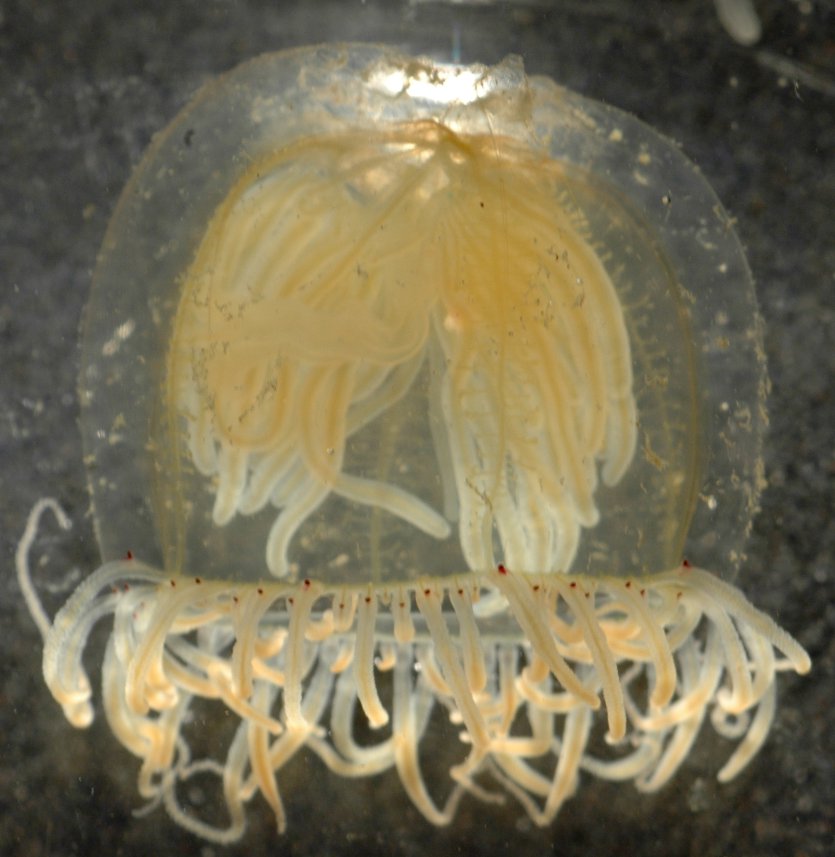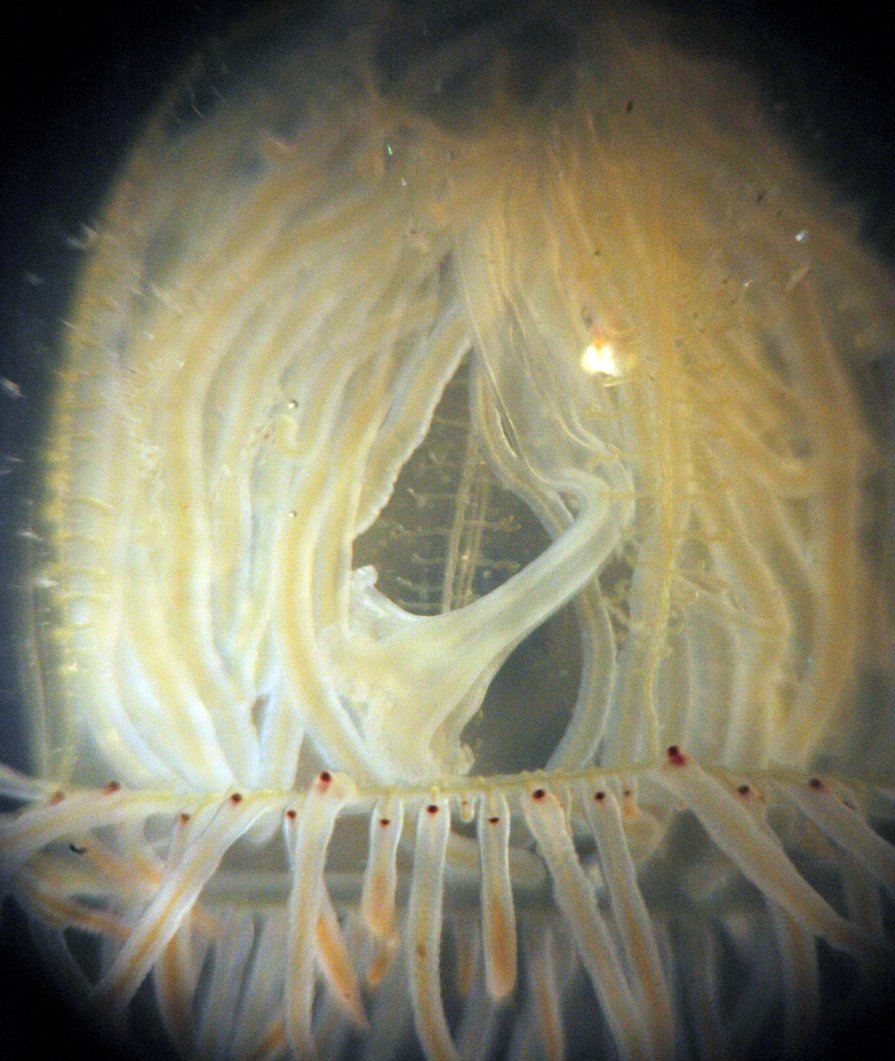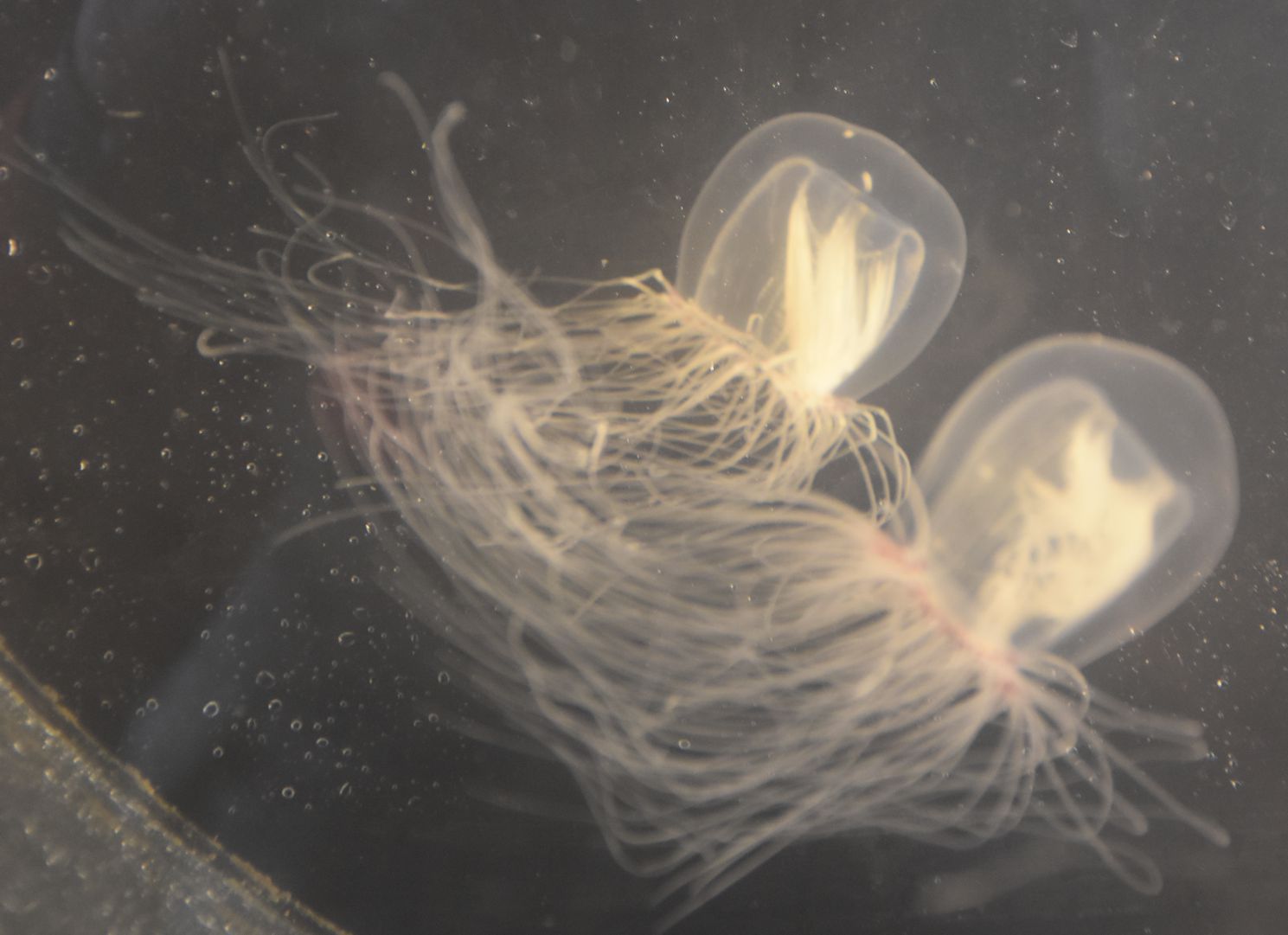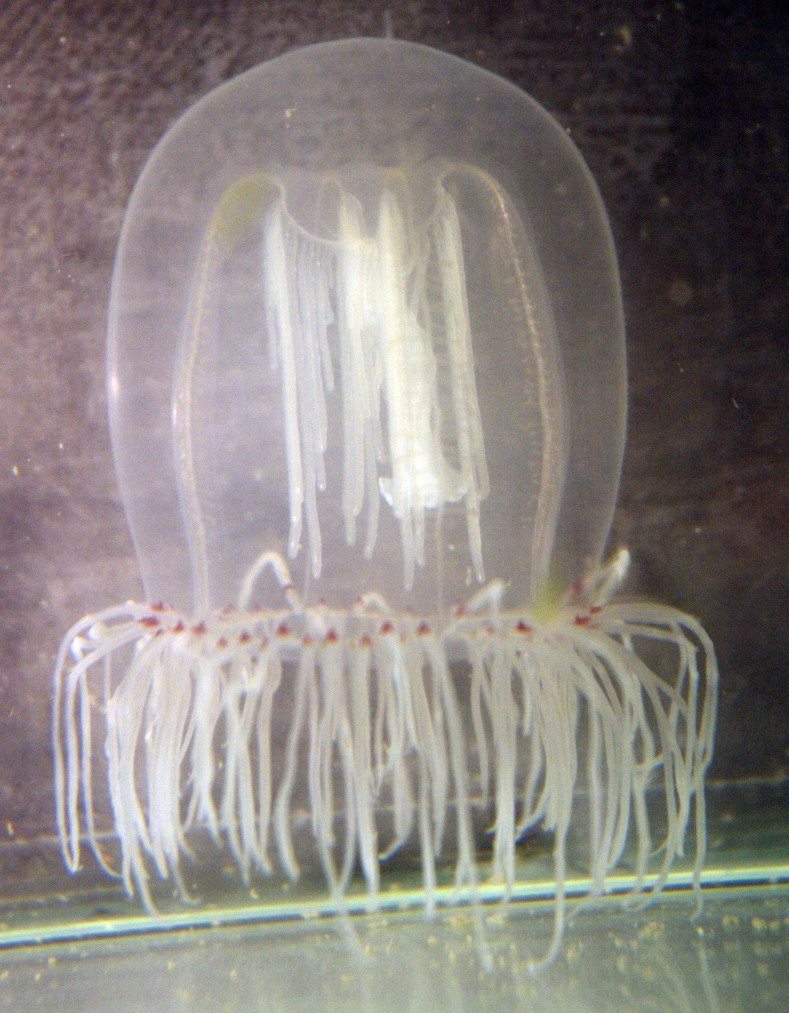Polyorchis penicillatus (Eschscholtz, 1829)Common name(s): Red-eye jellyfish, bell medusa, bell-shaped jellyfish |
|
| Synonyms: Polyorchis penicellata |  |
| Phylum Cnidaria
Class Hydrozoa Order Hydroida Suborder Athecata Family Polyorchidae |
|
| Polyorchis penicillatus from Rosario Bay. About 3 cm long. | |
| (Photo by: Dave Cowles, June 2006) | |
How to Distinguish from Similar Species: Ptychogena lactea and Staurophora mertensi are similar except that their bells are much wider than high and their gonads do not hang down into the subumbrellar space. Polyorchis haplus does not have lateral diverticula on the radial canals.
Geographical Range: Aleutian Islands, Alaska to Sea of Cortez, Mexico
Depth Range:
Habitat: A coastal species (nearshore), especially in bays.
Biology/Natural History:
This is a
common hydromedusa
along the west coast. It can often be seen in midwater but
more often
swims near the bottom, especially around eelgrass. The jelly
eats
caprellid
amphipods and other small crustaceans which are common on
eelgrass,
as well as worms and crustaceans from the bottom and small
plankton.
Sexes are separate. The polyp stage of this species is either
very
small or unknown, and the medusa may develop directly from a planula
larva.
This species is large for a hydromedusa,
and some of the largest hydromedusae
are in this genus. The medusa is common in some years and
nearly
absent in others.
| Return to: | |||
| Main Page | Alphabetic Index | Systematic Index | Glossary |
References:
Dichotomous Keys:Flora and Fairbanks, 1966
Kozloff 1987, 1996
Smith and Carlton, 1975
General References:
Gotshall,
1994
Harbo,
1999
Johnson
and Snook, 1955
Kozloff,
1993
Morris
et al., 1980
Niesen,
1994
Niesen,
1997
Ricketts
et al., 1985
Wrobel
and Mills, 1998
Scientific Articles:
Web sites:
General Notes and Observations: Locations, abundances, unusual behaviors:

In this closeup view the red spots at the ocelli, the pendant gonads, the long manubrium can be clearly seen. The lateral diverticula are also visible on
several radial canals.

This freely swimming individual has its tentacles extended out farther
than the one above does. Photo by Dave Cowles, July 2008
Another individual, photographed 2012. Note the long, dangling gonads inside the bell.

Two individuals dancing in a planktonkreisel. Photo by Dave Cowles, July 2020
Click HERE
for a 1-minute movie of this species swimming in a planktonkreisel,
taken summer 2020. Some individuals are greenish-colored due to algae
adhering to their outer surfaces.
Authors and Editors of Page:
Dave Cowles (2006): Created original page
